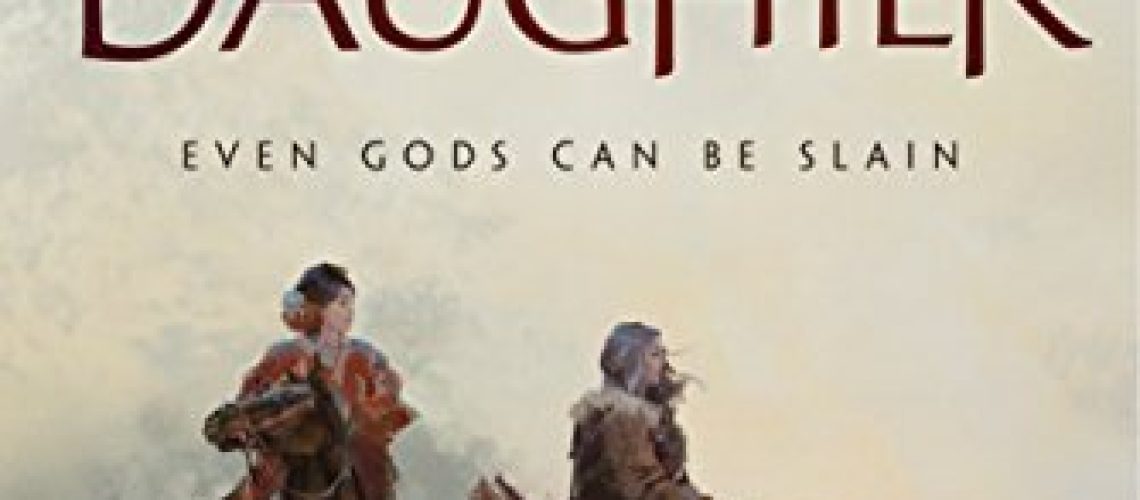The relationship, told in letters and looking backward from the present, of two extraordinary women and their evolving relationship is the heart of The Tiger’s Daughter, the debut novel by K Arsenault Rivera. Far from the Great Wall of Europe, The Tiger’s Daughter uses models of medieval China and the steppe cultures beyond it as its social model, political models, and its fantastic and mythological elements as well.
Shefali is a member of the Qorin, a warrior people of the steppe who have been powerful enough at times to severely threaten the more settled Hokkarans and their Empire. Inside that Empire, Shizuka is the niece of the Emperor, and so the putative Heir to that Empire. Brought together at a young age, their fateful meeting sets them both on courses that will part, intersect, and ultimately change both the steppe and the Empire in ways neither of them can predict, or even intend.

The style of the book strongly stamps the novel. That backward looking narrative, with a lot of epistolary passages and framing, gives the work a distinct style that works for it. We already know right at the beginning where the characters are going to end up. It is no spoiler, then, to reveal that Shizuka is going to be Empress, even as the epistolary recollections throw us back years to when she is merely the niece of an increasingly loathsome Emperor. The looking backward aspect of the novel did take some getting used to for me and it does mean that the novel for long portions has a rather stately rhythm. As the plot progresses, things intensify with sharp bursts of action, but the novel is a very patient one.
One other thing I like about the verbiage of the novel is how it thinks about and uses language and how language and culture meet. There are multiple spoken and written languages in the world of the novel, and there are forms of address and even different given names and particles attached to the use of those languages. There is tension, and revelation and illumination in how and when people address each other in varying ways. Names and how they are rendered, used, abused and acquired is an important and intriguing aspect of the narrative.
The novel plays with layers and relationships and bonds in a way that a lot of novels forget or just ignore in favor of much more direct and straightforward relationships. It is the relationship between Shefali’s and Shizuka’s mothers, the former a powerful General, a leader of soldiers without peer underneath the Eternal Sky. The latter is possibly the greatest wielder of a sword in history, anywhere, with a sword of destiny and power to match it. Their relationship, as revealed in the pages of the book, also helps define how their daughters ultimately come to be together.
There is a lot to love in the relationship and the main characters. Given that aforementioned style, we get a sense of where Shizuka and Shefali’s relationship will ultimately end, so that when the two characters reach the moment in the recollection of the narrative where they deepen their bond from a familial to a loving one, it is not a surprise. Instead it is a natural extension and development of their time together, their personalities and relationship. The transgressive nature of their relationship, in either society, provides a social counterpoint to the trangressive nature of Shefali herself, once a crucial change in her very nature occurs. Their love cuts across boundaries of class, gender, and much more. The author is not starry-eyed about the power of “true love” but the power of two people who are determined to love each other, come what may, is a strong and undeniable theme in the book.
And even beyond the relationship aspects of this book, the stately pace of this novel is punctuated with intriguing set pieces when the action ramps up. For a novel about that relationship, there are also demons, dark powers, and much more that the author renders with pulse-pounding intensity. There is a rich delve into the mythic and magic worldbuilding that is really just a tantalizing glimpse into things that I want to know more about. But even what appears here shows invention, and richness, and intriguing lines of inquiry into a deeper world.
The Tiger’s Daughter is a gorgeous, lyrically written book, and a fantastic debut by Rivera. I am not sure, given how the narrative is constructed and wrapped and then unfolded in this novel, how this can be the beginning of a series without doing violence to the structure of this book, but given the investment that I have gladly made in the world and the characters, I am eager to read more of their story, regardless.







